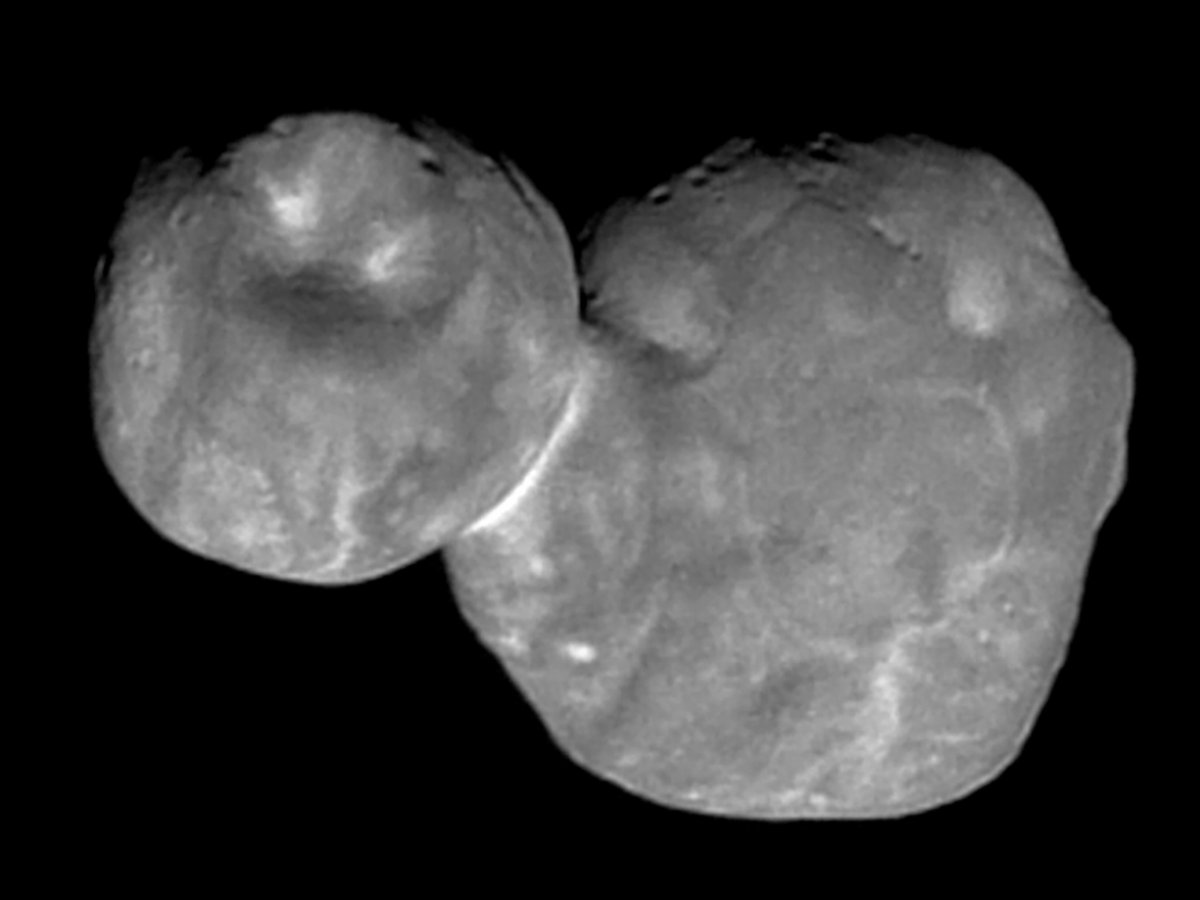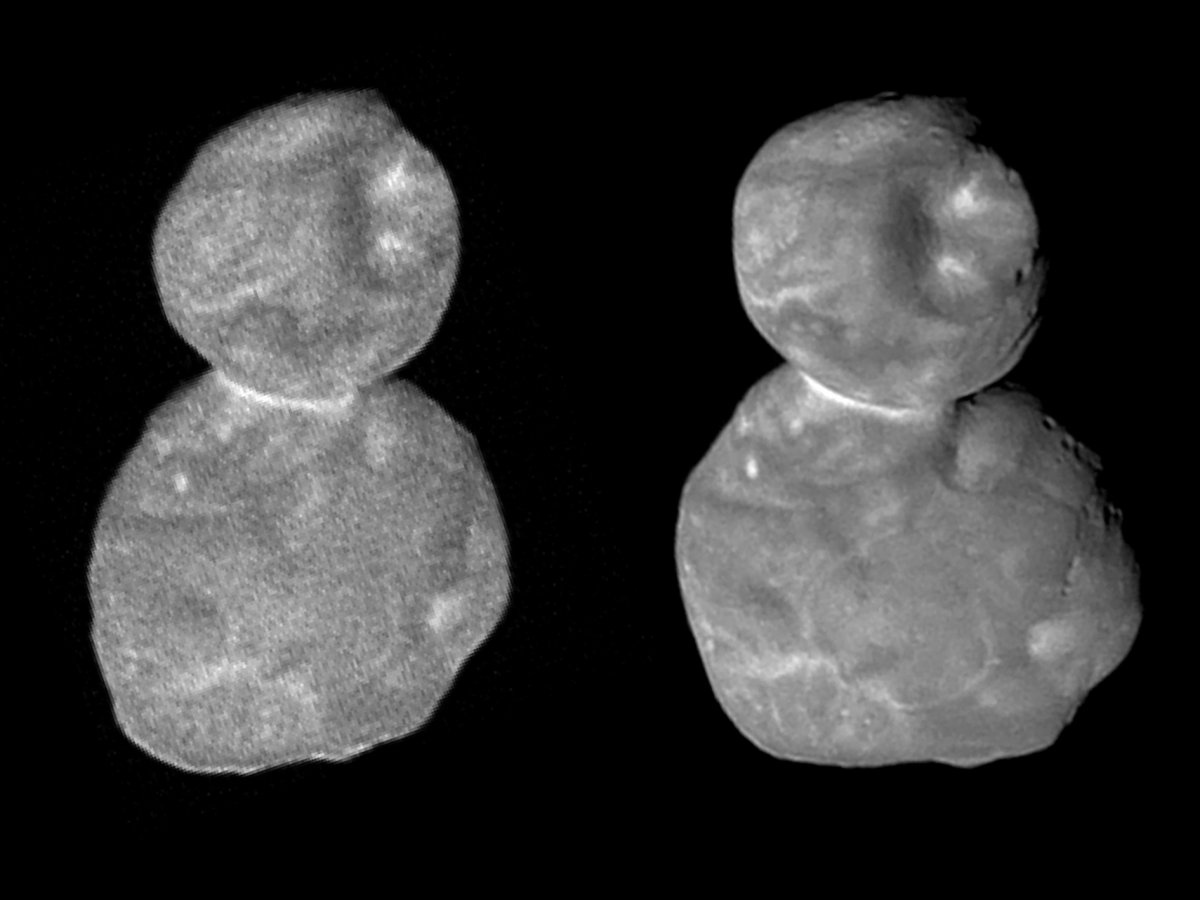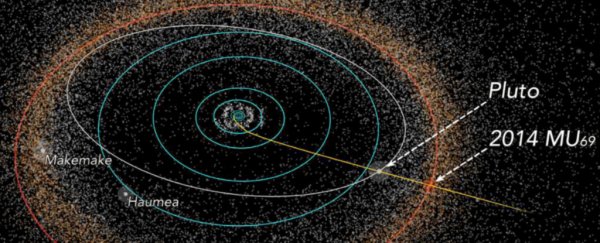Weeks after NASA's New Horizons spacecraft made the farthest-ever visit to an object, located more than 4 billion miles from Earth, the probe beamed home an unprecedented photo.
The image (below) is devoid of colour and looks somewhat fuzzy, but it represents the most detailed look yet at the object. Researchers say there are more and even better pictures that have yet to arrive.
 (NASA/JHUAPL/SwRI)
(NASA/JHUAPL/SwRI)
Early in the morning on New Year's Day, NASA's nuclear-powered mission zoomed past the snowman-shaped object, which is formally known as (486958) 2014 MU69, though it's commonly called "Ultima Thule".
New Horizons flew within 2,200 miles of MU69 at a speed of about 32,200 mph, and data from the flyby is giving scientists a window into the formation of the solar system. Since Mu69 is so cold and far away, it's essentially the most pristine building block for planets ever seen.
"This is exactly what we need to move the modelling work on planetary formation forward, because we're seeing evidence – right here – of accreting objects, and then having them combine,"Cathy Olkin, a deputy project scientist on the New Horizons mission, said during a press conference earlier this month.
However, as Olkin and researchers have known for a long time, it will take about 20 months – likely into late 2020 – to download all of the data from New Horizons' historic manoeuvre.
That's why researchers released the "best-yet view" of Mu69, shown above, just this Thursday – more than three weeks after the flyby.
In the comparison below, the left image is one of the earliest photos of the object sent to Earth, photographed by New Horizons from about 85,000 miles away. On the right is the new image, which was taken from about 4,200 miles away. Both are sharpened to show more detail.
 (NASA/JHUAPL/SwRI)
(NASA/JHUAPL/SwRI)
The new photo is far from the last that researchers will get access to, however; New Horizons took hundreds of images and recorded scores of other data during the flyby.
"Over the next month there will be better colour and better resolution images that we hope will help unravel the many mysteries of Ultima Thule," Alan Stern, who leads the New Horizons mission, said in a press release published on Thursday.
Why it will take until 2020 to get the rest of the photos
When New Horizons flew past Pluto in July 2015 – the first-ever visit to the minor planet – it took the probe about 15 months to send back all of its data to Earth. In the case of Mu69, it will take about 20 months to send everything it recorded on New Year's Day.
The wait is so long because of the hardware on and distant location of New Horizons.
NASA built its probe in the early 2000s, then launched it from Earth in 2006. So while New Horizons' systems are redundant and healthy, the electronics themselves are outdated by about 15 to 20 years.
Another bottleneck is the weak signal from the spacecraft's radio antenna. Right now, its power output is about 15 watts, or one-fourth that of a standard 60-watt incandescent light bulb.
A third problem is that it's broadcasting from more than 4 billion miles away. At this distance, each bit of digital data – sent as radio waves travelling at light-speed – takes more than six hours to reach antennas on Earth.
These factors throttle the probe's output to below 1,200 bits per second, which is about 80,000 times slower than the average broadband internet download speed in the US in 2018.
At this rate, it took weeks to get enough images to create a small movie showing the rotation of MU69, which spins about once every 16 hours.
The New Horizons team expects to see the highest-resolution colour photos sometime in February.
"We are guardedly optimistic that those highest-res images will cover a massive amount of the surface," Stern said earlier this month. "Stay tuned for February."
Planetary scientists like Stern are eager to see more because the pictures and other data should help solve some longstanding mysteries about the solar system's 4.5 billion years of history.
"It's like the first time someone opened up the pharaoh's tomb and went inside, and you see what the culture was like 1,000 years ago," he said. "Except this is exploring the dawn of the solar system."
This article was originally published by Business Insider.
More from Business Insider:
